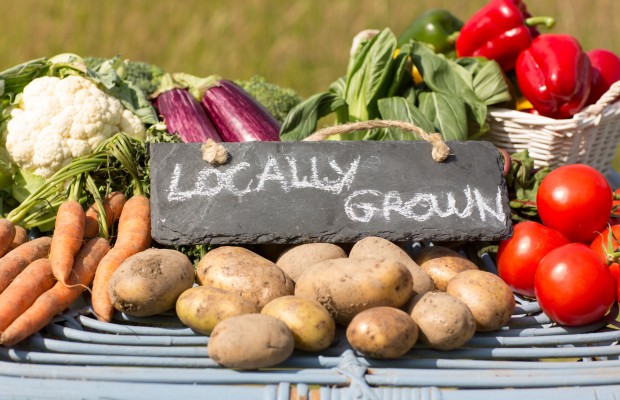Finding the Best Produce at Farmers Markets

Farmers Markets are wonderful places to shop. Fresh, colorful, locally-sourced fruits and vegetables. High quality baked goods, spreads, cheeses. And in many cases, pricing more reasonable than, or at least commensurate with, the products sold in grocery store chains.
But not all Farmers Market produce is equal. Finding the best, healthiest, freshest foods can be a challenge, even here.
The first key to buying the best is getting to know the market vendors. This is a must for many reasons. For example, talking to them about where their produce is grown will help you to discover whether or not their source is organic. In many cases, if vendors are selling organic, they’ll have the signage to prove they’ve met the USDA’s National Organic Program requirements. If there’s no display, some vendors may still use organic growing techniques, but may be smaller farmers who haven’t participated in the certification process. Naturally, not all farmer’s market vendors even claim to be organic, and the decision is up to you whether or not you’re interested in purchasing fresh produce that isn’t as “green” as you might like it. How important is buying organic? Fruits and vegetables which you are going to consume skin and all are much less healthy when conventionally grown, as pesticides and fertilizers will cling to them.
Conventionally grown peppers and apples both have high levels of pesticide residue. With produce like avocados, whose thick skin will be peeled away, pesticide use may be of less importance.
Of course, the search for great produce doesn’t stop at discovering whether or not it’s organic. The freshest and best produce also depends on what’s in season. Roll with what’s in and what’s out. Don’t expect to find squash all year ‘round, or fresh blueberries in January. Once again, it’s helpful to spend a little time talking to your vendors. Find out some of their favorite ways to prepare a vegetable or fruit you’re not familiar with. Ask them what items are at the end of their growing season, and what are newly ripe. Many vendors will be glad to teach you how to touch fruits and vegetables for ripeness and freshness. No danger of buying overripe or hard plums, if you know how a crisp, fresh fruit should feel.
Next, don’t be afraid to sample your produce. Many vendors will have cut fruit or vegetables out for tasting, but even if they don’t, and you’ve already inquired about what produce is the freshest, if you’re still unsure what to buy, ask if you can have a taste.
If it’s impractical to taste an item, use your eyes. There’s plenty to tell about produce just by looking at it. Are the asparagus stalks crooked? That’s what happens when they’re less than fresh, which means less flavor and less nutrients. Keep an eye on stems and leaves. Cherries with bright green stems are fresher than those with darker stems. Strawberries with bright green leaves also indicate freshness over fruit with darker or wilted leaves. Likewise, carrot tops should be firm, not wilted; broccoli a rich dark green, not pale, or yellow.
One more consideration when searching for the best farmers market produce: finding the best price. Is it possible to cut costs without sacrificing quality? Definitely. Market prices are controlled to a large extent by the season. It’s important to buy seasonal products not only for freshness, but due to cost. More supply, less expense. For example, during California’s strawberry season, you’ll find multiple packs of sweet fresh berries at bargain prices. When growing season ends, don’t head for the one expensive vendor with an indoor green house. Become a fruit and vegetable adventurer, and go for something different. Kumquats are less conventional, but just as tasty.
In short, look for organic produce, get to know your vendors, and use your senses: touch, sight, and taste – to pick the best produce. Find the best prices and the freshest produce by buying in-season items, and exploring the delicious tastes that may be outside your comfort zone.



















